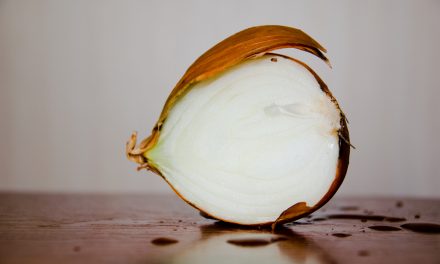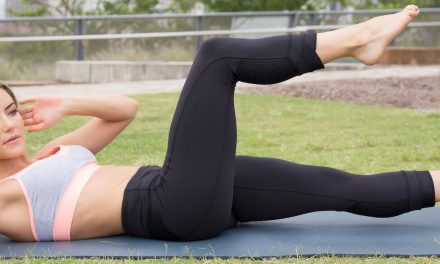STORY AT-A-GLANCE
During times of crisis, staple foods and plants you know will grow well are ideal; it’s not the time to be trying out experimental varieties
Choose vegetables that can be canned, fermented or pickled so you can eat them at your leisure, or those that can be stored for months without the need for refrigeration
Top foods to plant in troubled times include potatoes, green beans, heirloom onions, carrots, winter squash and okra
In addition to providing you with fresh vegetables without a trip to the grocery store, gardening is a simple way to reduce stress — another important benefit during times of crisis
The idea of being as self-reliant as possible is suddenly becoming more appealing to many, some are taking an interest in gardening for the first time.
In late March 2020, Oregon State University waived the fee for its online vegetable gardening course and had 15,000 people sign up in the next week. Normally, they would have had two to five people register in that time period. Meanwhile, seed companies have reported “an unprecedented surge of orders” while plant nurseries are seeing an uptick in business.1
“It has been like wildfire,” Elliot Dasler, owner of a nursery in Oregon, told KOIN 6 News about how their business has taken off. During times of crisis, staple foods and plants 2 you know will grow well are ideal; it’s not the time to be trying out experimental varieties.
Even better, choose vegetables that can be canned, fermented or pickled so you can eat them at your leisure, or those that can be stored for months without the need for refrigeration.
Such foods not only exist but can be quite easy to grow right in your own backyard. If you’re among those looking to test out your green thumb, whether for stress-relief purposes, sustenance or both, Hoss Tools has created the useful video I’ve posted here about some of the most crisis-worthy vegetables to plant.
Staple ‘Crisis Crops’ to Plant in Your Vegetable Garden
Hoss Tools, located in Georgia, provides tools, seeds and other supplies for growing your own food, including for those interested in homesteading or leading a self sufficient lifestyle. In the video, they’ve detailed their top foods to plant in troubled times, which include the following:
Potatoes — Potatoes can be stored for up to six months, offering a source of nutrition that doesn’t require refrigeration. They can also be canned, which extends their storage life to three to five years. Hoss recommends planting potatoes two to three weeks before your region’s last frost, in rows spaced 36 inches apart. You should incorporate compost into your soil before planting.
Their favorite varieties include Kennebec, a round white potato with creamy flesh and low- to medium starch, and Yukon gold, which has a buttery yellow flesh. Red Norland, which is a medium-sized rose-colored potato with dense flesh and low starch, is another favorite.
Importantly, potatoes love to be hilled, which means adding additional soil to the bed and molding it around the plants. You should hill the potatoes two or three times during the growing season. The idea is that, since potatoes are a part of the plant’s stem, not the root, the more “stem” you keep underground, the more potatoes will grow and the better your harvest will be.3
Potatoes, which are rich in fiber, vitamins B and C and minerals like potassium, are easy to grow in the early spring and take about 85 to 100 days to mature, depending on environmental conditions.
Once you harvest the potatoes, it’s important to store them properly — loosely (not in plastic) in a dark, dry spot at around 50 to 60 degrees F. While potatoes like a dark, cool environment, they should not be chilled, as they’re damaged by refrigeration.
Green beans — Green beans, which offer a rich source of vitamins A, C and K and manganese, fiber and folate, are another excellent, productive storage crop, which can be canned right along with potatoes, or fermented.
Green beans can also be blanched and frozen for up to a year. Hoss recommends the momentum bush bean variety, which they say is the most productive bush bean 4 variety out there, with high yields, concentrated harvests and high tolerance to stress.
Beans should be planted in spring after the last frost has occurred, as germination typically occurs when soil temperatures are 65 degrees F or higher (with optimal germination temperature being 77 degrees F).
The seeds can be planted directly outdoors and can be planted every couple of weeks in the spring and early summer so you’ll have production throughout the entire growing season.
Plant them as early as possible in the spring, since the plants will drop blooms, or cease production, during hot summer temperatures. Bush beans can be harvested three or four times in the season, and can also be planted in double rows to save space and increase your harvest.
To do this, make two rows of beans spaced 6 inches apart, with the double rows spaced 3 feet apart. 5
If you have access to drip irrigation or a soaker hose, you can use it to provide irrigation to both rows of beans at once. Beans can also be planted densely, with Hoss suggesting gardeners “stack the plants thick” to ensure you’ll have plenty of beans to eat in the cooler months if you can them.
Heirloom onions — Heirloom onions are a truly sustainable food source. Homesteaders in the past growing such onions would come out to the field and dig up onions as they needed them, then dig up the bulbs and store them as you would normal onions to be replanted the next year.
Not only do onions store really well, keeping for two months or more after harvest, depending on variety, but you have your own seed stock that you can reuse and share with your neighbors. Further, onions, which are rich in vitamin C, sulphuric compounds, flavonoids and other phytochemicals, are incredibly healthy.
Carrots — As with most homegrown vegetables, the taste of a store-bought carrot can’t compare to the flavor of a homegrown variety. Plus, carrots are another useful vegetable during hard times, as they can be stored in the refrigerator for two to three weeks or blanched and frozen for even longer storage.
Other options include canning and fermenting, making these a versatile vegetable for long-term usage.
Like green beans, carrots can be grown in double rows with irrigation in between. Plant rows 6 inches apart, skip 3 feet, then plant two more rows 6 inches apart. Hoss recommends seeding carrots in a thick band and not thinning them, so you’ll have a “dense forest of carrots” and get a lot of production out of a little bit of space.
When grown this way, your carrots may not all come out uniform in size — some will be smaller and some bigger — but they’ll taste great just the same. Carrots should be seeded directly outdoors, as they don’t transplant well, and do best when planted in cooler temperatures during the early spring or fall.
Carrots, which are rich in valuable beta carotene, require longer to germinate than most other crops, and you’ll need to keep the soil moist for at least seven days for germination to occur. A soil temperature of about 75 degrees F is optimal.
If you live in the South, you can grow two crops of carrots per year. Plant one in the fall, allowing the crop to overwinter so you can harvest in the spring. Since it’s not too hot yet, the carrots will hold well in the soil, allowing you to harvest them as you need them. You can then plant another crop in the early spring, which will be ready for a late spring/early summer harvest.
Winter squash — Winter squash, with its thick skin, is another excellent food for storage purposes. Though they’re called “winter” squash, they’re grown during the warm part of the year but can be stored without refrigeration for use during the winter. Generally, the sweeter the variety, the less time they can be stored.
Kabocha, a winter squash with a creamy flesh that’s useful for soups, can be stored for about three months while more common butternut and acorn squash will keep for six months. The sweet dumpling variety, which is one of the sweetest winter squashes, has an average storage time of 30 to 45 days.
Winter squash is a good source of vitamins K1, A, C and E, as well as B vitamins, calcium and magnesium. Storage time is important, as winter squash produce one harvest at the end of the growing season, giving you food to enjoy all winter long.
Okra — Okra is a warm-weather crop that produces pods measuring 2 to 3 inches long, which grow on a large, leafy and perennial plant with hibiscus-type flowers. High in fiber, okra also offers vitamin K, manganese, folate and vitamin C, as well as plentiful amounts of flavonoids and antioxidants.
It’s an important crisis-crop because it’s a high-producing crop with long-term production. The plants may start producing pods when they’re 1 to 2 feet tall and will continue producing, as the plants grow 5 to 6 feet tall. However, you can cut the tops 6 off when it gets about 4 feet tall, and plant three succession plants per year.
Hoss recommends planting okra — especially the most productive jambalaya variety — in the spring and again in midsummer and early fall, as it will grow up until the first frost date. It’s important to rotate where you plant okra, coming back only on a three year rotation, due to nematodes, which are tiny worms that act as plant parasites.
However, once planted, okra is a hearty and versatile food that can be frozen, canned or pickled. It’s a staple food source in the South, and though it prefers irrigation for the most abundant productivity, it is somewhat drought-resistant and will still grow well in very hot, drier conditions.
Planting Your Own ‘Victory Garden’
During World War II, a time when potential food shortages were looming, victory gardens became so prolific that they supplied an estimated 40% of Americans’ fresh vegetables. 7
Now, “corona victory gardens” are becoming a thing, and while it’s always an excellent time to grow your own food, if you’ve been considering it in the past, now is a perfect time to get started.
In addition to providing you with fresh vegetables without a trip to the grocery store, gardening is a simple way to reduce stress — another important benefit during times of crisis.
A study in the journal Preventive Medicine Reports also concluded, “A regular dose of gardening can improve public health,” noting that gardening is associated with reductions in depression and anxiety and increases in life satisfaction, quality of life and sense of community. Gardening by older adults is also linked to: 8 9
Feelings of accomplishment
Well-being and peace
A decrease in depressive symptoms
A protective effect on cognitive functions
The development of social links
In addition to the vegetables mentioned above, which are ideal for their high productivity and/or long storage potential, other popular garden vegetables include tomatoes, sweet and hot peppers, cucumbers, snow peas, spinach, lettuce and chard — all of which are easy to grow.
Remember, too, that the No. 1 rule for growing nutrient-dense food is healthy soil. To develop healthy soil, protect it by diversifying your plants, avoiding tilling and covering the surface with cover crops or mulch. Even starting with one or two vegetables will provide you with an important food source, increasing your food security and giving you a pastime you can be proud of.
ORIGINALLY PUBLISHED BY: DR. JOSEPH MERCOLA.
Sources and References
1, 2
KOIN 6 News April 5, 2020
3
Our Stoney Acres June 11, 2019
4, 5
Grow Hoss, Momentum Bush Bean
6
Grow Hoss, Jambalaya Okra
7
Modern Farmer April 6, 2020
8
Prev Med Rep. 2016 Nov 14;5:92-99
9
Geriatr Psychol Neuropsychiatr Vieil. 2014 Dec;12(4):424-31












